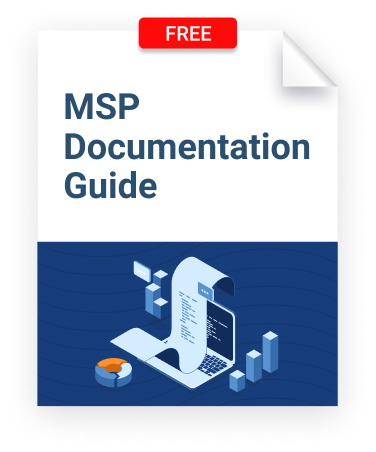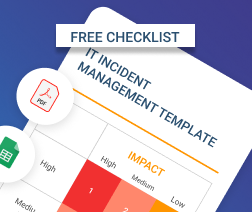MSP Business
How to Deal with Customers’ Complaints
The most successful MSPs are those that pull out all the stops to ensure maximum customer satisfaction. However, every business, no matter the industry or vertical, has to deal with upset customers.
The trick is to leave them feeling satisfied with how well you handled the complaint.
This is a core part of delivering exceptional customer experience — and failing at this could mean increased churn and lower revenues.
While many MSPs see complaints as one of the necessary evils of doing business, it’s actually a great opportunity to deliver better service to your customer base. Never perceive complaints as an attempt to offend you. If such complaints occur regularly, it’s an indication that your team is falling short of delivering expected levels of service.
All customer complaints can be categorized into two types: ostensive and reflexive. Let’s review how MSPs can deal with these types of complaints.
Ostensive complaints
Ostensive complaints refer to evidence-based complaints. These are complaints related to actual problems, whether it’s server downtime, malfunctioning software/hardware, or poor network, among others.
Further reading Employee Protection 101: Defending Your Team Against Abuse from Clients
Dealing with such complaints
When dealing with ostensive customer complaints, the first rule is not to become defensive. Clients are usually disappointed that their expectations weren’t met and that they aren’t receiving good value for their money. Getting defensive is a mistake; while it may sound like one, a complaint isn’t a personal attack. Allow the client to finish laying out the complaint before responding.
Even if you do not understand the nature of the complaint, try to find the right words to assuage the customer. Never use the phrase “I don’t know” when responding to an angry customer. If the complaint is outside your expertise, first calm the customer. Then, hand them over to someone who can better attend to their complaint.
However, the broader the range of technical skills your customer support team has, the more complex complaints can be resolved right away.
Investigate the complaint
Don’t jump to conclusions immediately; ask incisive questions to understand the nature of the problem better. Once you do, identify the reason for the failure; it could be a failed server, outdated hardware or improperly configured software.
Check the entire technology stack to troubleshoot the issue. By doing this, you’ll discover whether your technical team did all they could to prevent such outcomes, and it will help you identify any loopholes and opportunities to improve your operations.
Finally, review all processes and fine-tune them according to your findings.
Reflexive complaints
Reflexive complaints describe issues that pertain to the inner customer’s perception of a particular situation. They’re usually about what a customer thinks should happen, and result from emotions rather than evidence.
Dealing with reflexive complaints
There’s only one way to deal with such complaints: empathize with the customer but don’t promise to handle the problem.
Since a reflexive complaint is about issues that are outside your control, there’s nothing you can do. But telling the customer this will only upset them more.
Once you’ve received the complaint, don’t apologize. Try to explain that the problem is a minor one and not really your responsibility or the fault of your team. You can put off responding to the customer for a while (to reduce their inner emotional turmoil). Within this time, the customer’s anger may fade, thus enabling you to discuss what the issue is really about. When you do respond, look for an explanation that will satisfy them.
If the customer makes such complaints repeatedly, and your team is unable to persuade them otherwise, it’s in your best interests to let the customer go. Do this only as a last resort, after you’ve exhausted the other options.
Further reading Think It's Time to Fire a Client? Here's What You Must Know
How to prevent complaints
First, you must keep tabs on your customers to ensure that they are satisfied with your services. This requires setting up a robust feedback mechanism. A great way to do this is by integrating NPS surveys and one-click feedback into your mail-outs. Ensure that you keep these surveys short and simple. Don’t overload clients with such survey requests, or else there could be some backlash.
Also, make your onboarding and process documentation as clear and concise as possible. One of the major causes of excess reflexive complaints is unrealistic expectations. Ensure that your clients have the right expectations from the get-go. Furthermore, you must be proactive in tackling complaints. Try to predict possible areas of complaints and nip such issues in the bud. You should also train and retrain your employees and look for innovative ways to better service delivery.

Finally, you should get rid of obviously toxic customers. Such customers often have unrealistic expectations, and nothing you do will be good enough for them.
Don’ts of handling customer complaints
When dealing with customers’ complaints, here are some things you should never do.
Ignore the complaints
You should never ignore customers' complaints, because it shows a lack of empathy for their issues. Your customer support team should regularly review all communication channels to ensure that no complaints fall through the cracks.
When you ignore complaints, customers become even more dissatisfied with your organization. They may unsubscribe from your service and also leave scathing reviews online.
Fire the customer because of “too many problems”
There’s an easy way to deal with clients who send in too many complaints: terminate them. While there are situations where this is the best response, firing the customer because of “too many problems” should only be done as a last resort. It’s better to confront problems head-on, rather than avoid them. The latter is a never good option; it only provides a temporary reprieve until the problem gets too big to avoid.
Further reading Firing a Customer: Here’s What MSPs Should Know
Never review your internal processes
Do all you can to identify the causative factors of recurring complaints. This includes an internal investigation and a review of your processes and procedures to identify possible issues.
You may discover that adjusting the way your teams deploy solutions or interact/collaborate with the client may resolve the complaint. However, you shouldn’t create an excessively customized environment for each client. Not only does this stretch your resources, but such environments are also more expensive to maintain, troubleshoot and refresh.
Wrapping Up
There’s no getting around customer complaints. Rather than seeing complaints as a bad thing, think of them as feedback and pointers towards opportunities to improve service delivery, earn the loyalty of customers and increase customer satisfaction levels.
This differentiates your company from the competition and enables you to gain a sizable share of the market.



